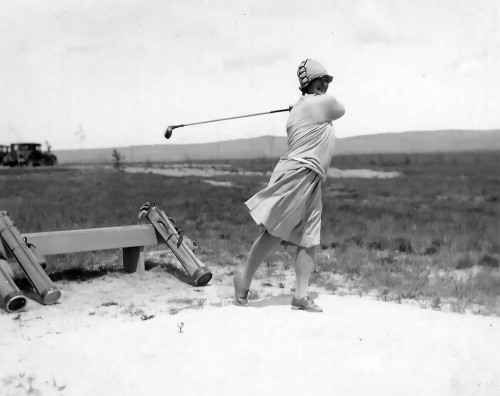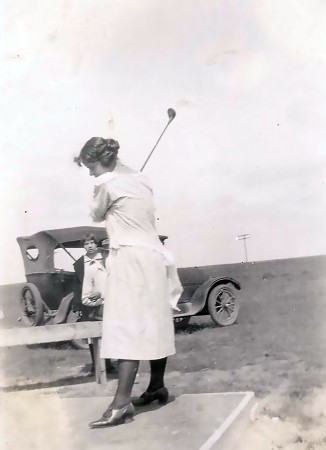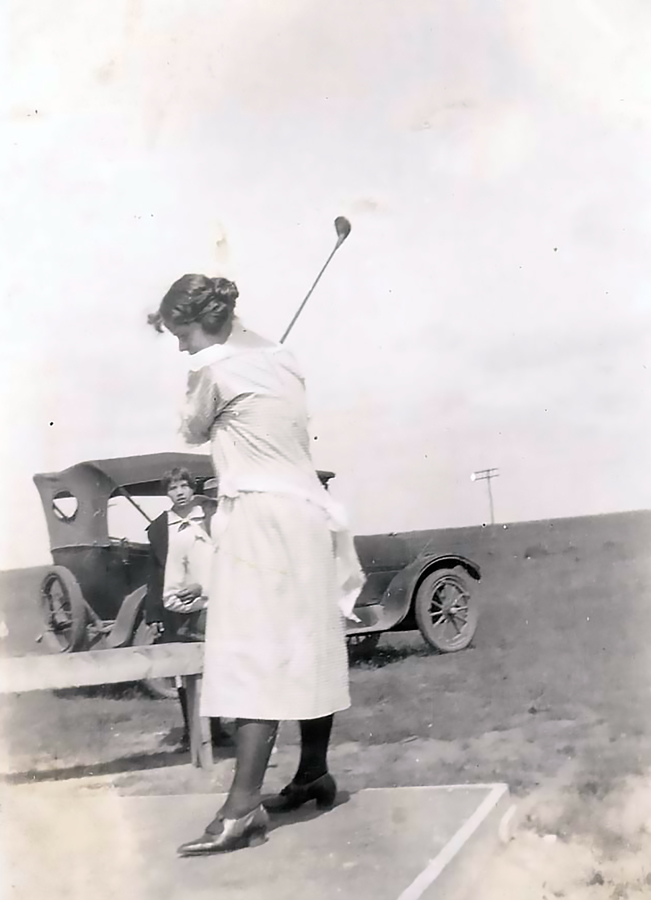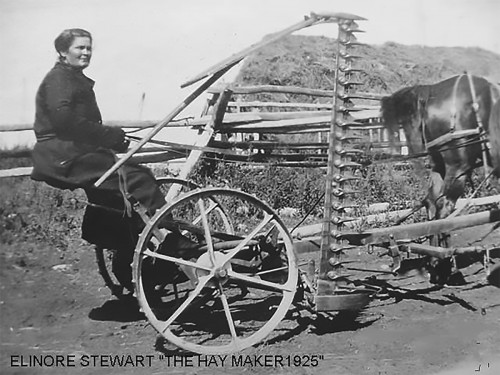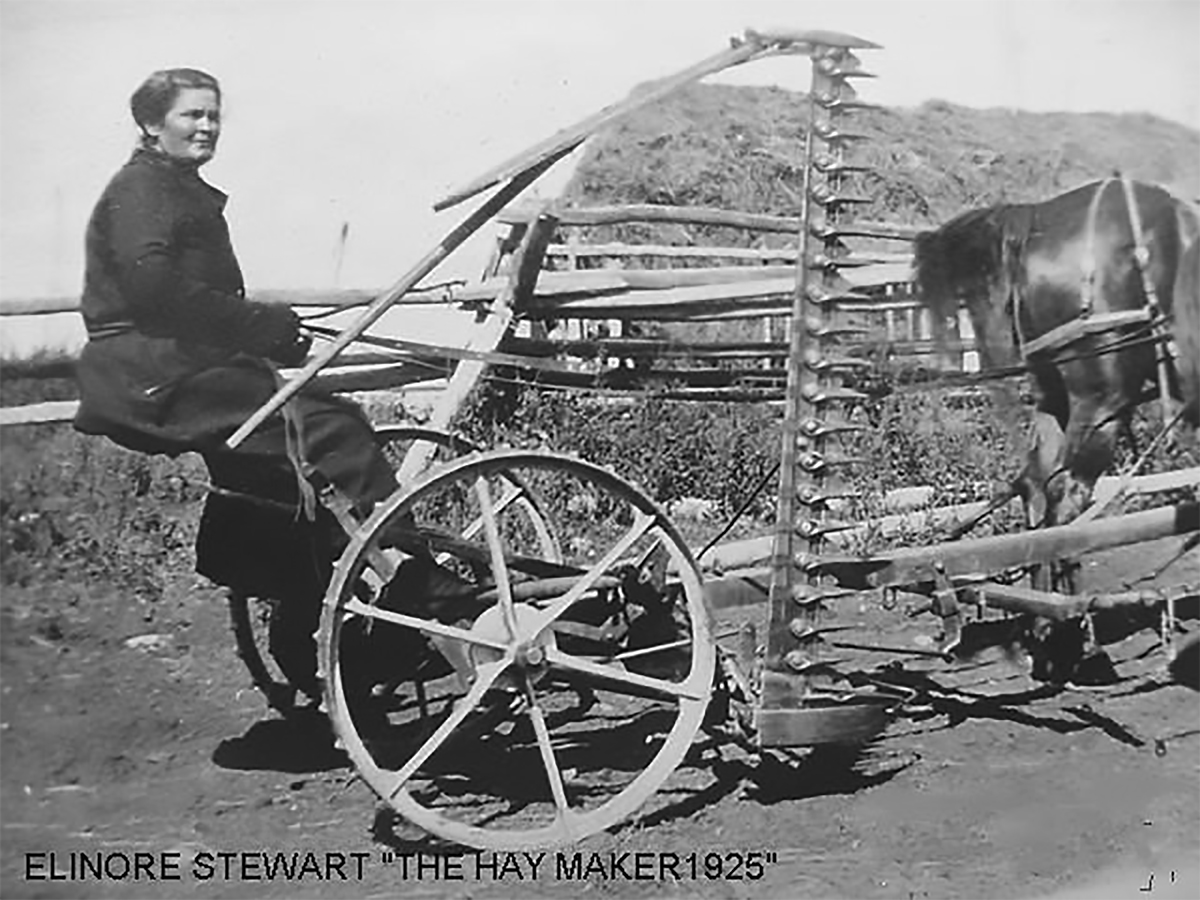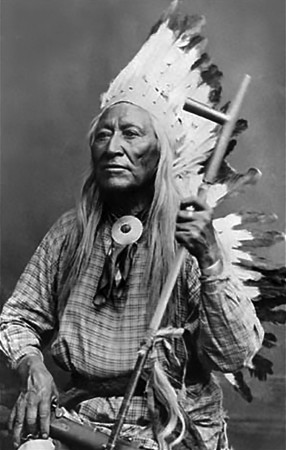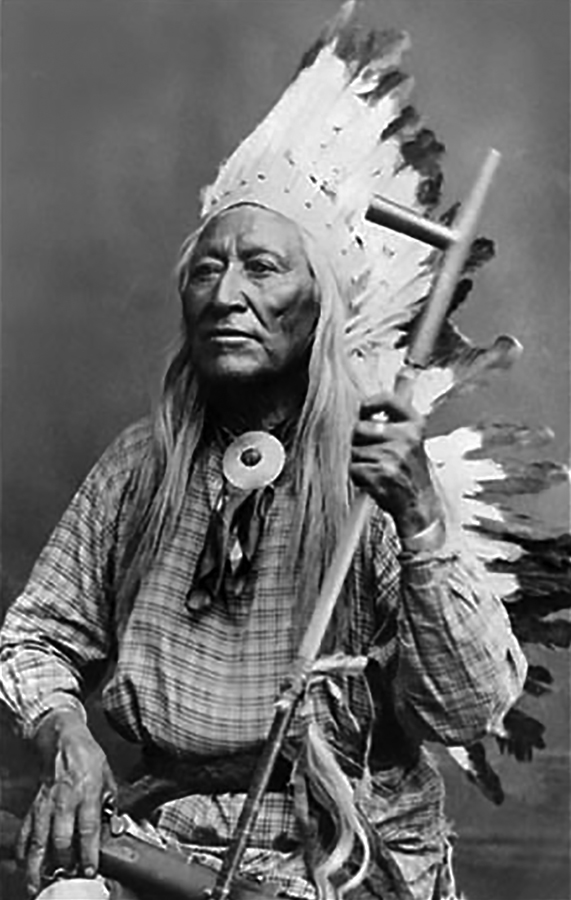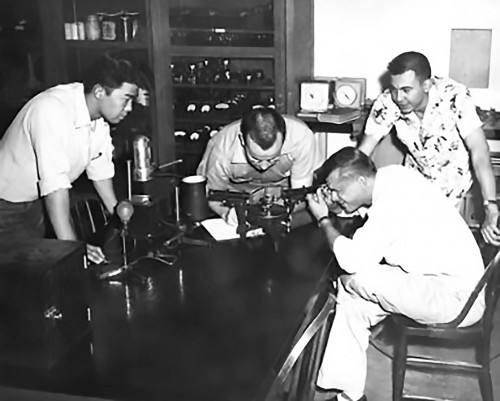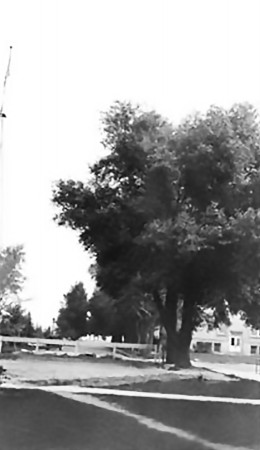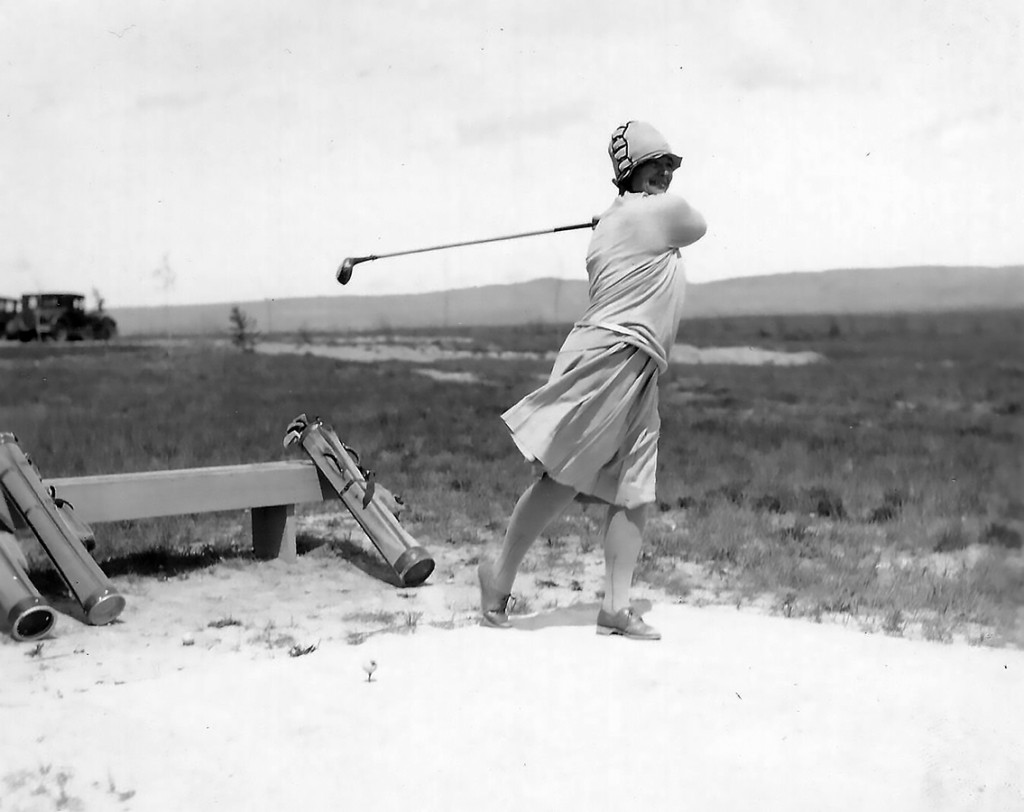
Miram Moreland Corthell was a part of the Corthell family, who held a high social standing in the community and were very active in the development of Laramie.
The building the Cavalryman Steakhouse occupies today was built in 1925 to serve as the clubhouse for the local Laramie Country Club. It had a nine hole golf course built on sand as well as a swimming pool. Pictured here we see Miriam Mooreland Corthell being her typical active self, playing golf at the country club golf course. The country club moved to the west side of town in the 1960’s and the building was abandoned for 10 years. In 1970, Bob and Betty Gerard founded the Cavalryman Supper Club in its present location. Just to the east, remnants of the nine-hole golf course can still be found.
History of Cavalryman Steakhouse
Cavalryman Steakhouse is located on the parade grounds of historic Fort Sanders, established in July of 1866. Originally named Fort Buford, for Major General John Buford, the post was designated Fort Sanders on September 5, 1866, in honor of Brigadier General William P. Sanders. In its heyday, the Fort Sanders Military Reservation protected the Overland and Lodgepole Creek emigrant routes, the Denver-Salt Lake City stage route, and the construction crews for the Union Pacific Railroad.
The post headquarters were laid out according to standard military plans around a parade ground some 400 ft. by 200 ft. in size. Troops from Companies A and F of the Third Battalion, 18th Infantry, and Company G of the 2nd Cavalry salvaged logs from the decommissioned Forts Collins and Halleck to build the barracks and kitchens, as well as the officers’ quarters on the southeastern side of the parade grounds.
Ruins of the Fort’s powder keg are visible just southwest of the restaurant’s main building. The Cavalryman Steakhouse building was built in 1925 to serve as the clubhouse for the local country club. Just to the east, remnants of the nine-hole golf course can still be found, with the pro shop building still standing just to the southeast.
On March 1, 1970, Robert & Betty Gerard founded the Cavalryman Supper Club in its present location. Cavalryman Steakhouse quickly became known as a great western steakhouse. Marion Griffin and various partners owned and operated the restaurant from 1975 to 2005. In January 2006, a group of investors purchased the restaurant with the intent of honoring its rich tradition while modernizing the restaurant concept. In December 2012, the local managing partner acquired the business and revitalized this historic steakhouse.

